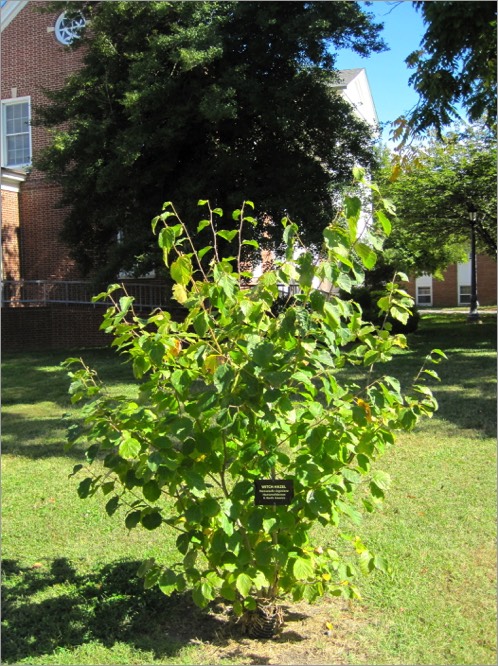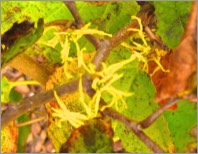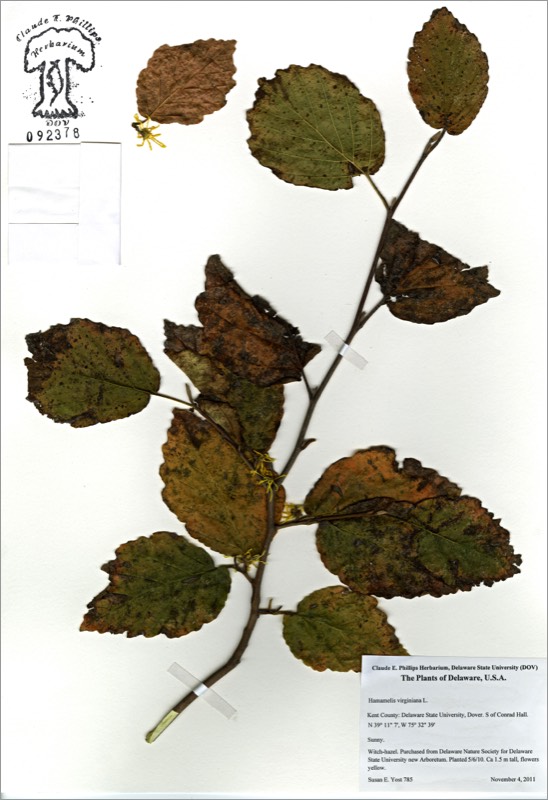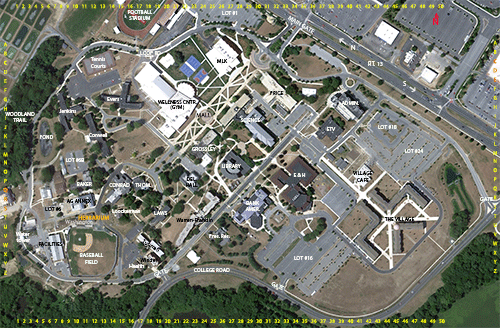Hamamelis virginiana

Hamamelis virginiana
WITCH-HAZEL
Hamamelidaceae
E. North America
Location: map coordinates R-15 (southwest side of Conrad Hall),
N 39°11'7'' W 75°32'41''
Planting history: planted 5/6/10. Source: Delaware Nature Society. (Dr. S. Yost, USDA NIFA Capacity Building Grant funds).
Description:
Native species, State Rank S5 (very common in Delaware)
WITCH-HAZEL
Hamamelidaceae
E. North America
Location: map coordinates R-15 (southwest side of Conrad Hall),
N 39°11'7'' W 75°32'41''
Planting history: planted 5/6/10. Source: Delaware Nature Society. (Dr. S. Yost, USDA NIFA Capacity Building Grant funds).
Description:
- deciduous shrub or small tree
- etymology: Hamamelis from Greek name for another plant; virginiana = of Virginia
- leaves with uneven base, wavy-toothed
- flowers yellow, open late in fall (last tree to bloom), with 4 ribbon-like petals
- fruits thick woody capsules, light brown, open explosively; seeds dispersed up to 20’ away. Fruits mature 1 year after the flowers; open capsules often stay on tree an additional 1+ years
- buds naked
- used medicinally; liniment made from oils from young leaves, bark and twigs. Also used as “divining rods” (thought to be able to locate water)
- common in forest edges or understory, from southeastern Canada to central Florida
Native species, State Rank S5 (very common in Delaware)



HIT REFRESH TO START LOCATION GRAPHIC